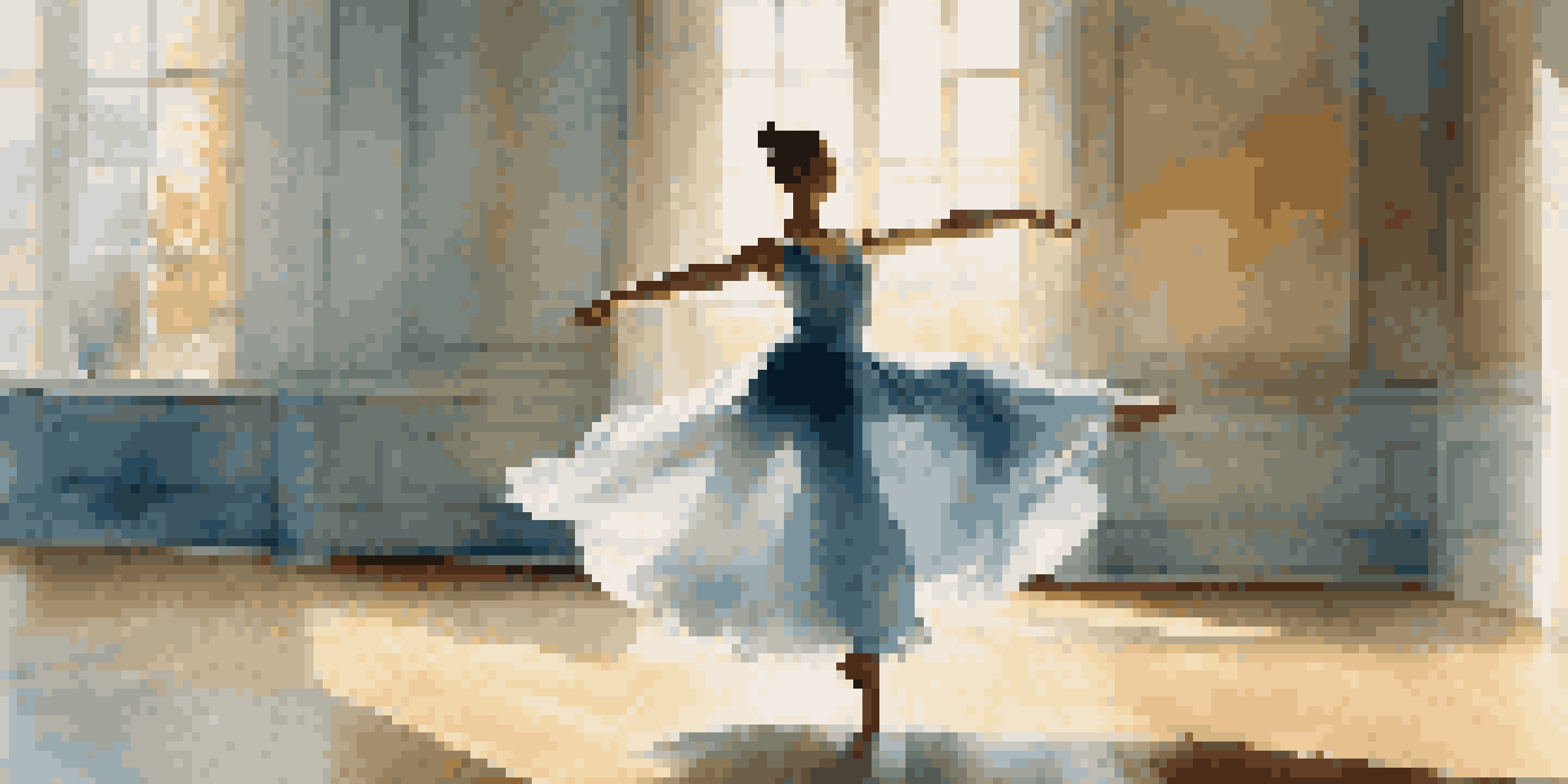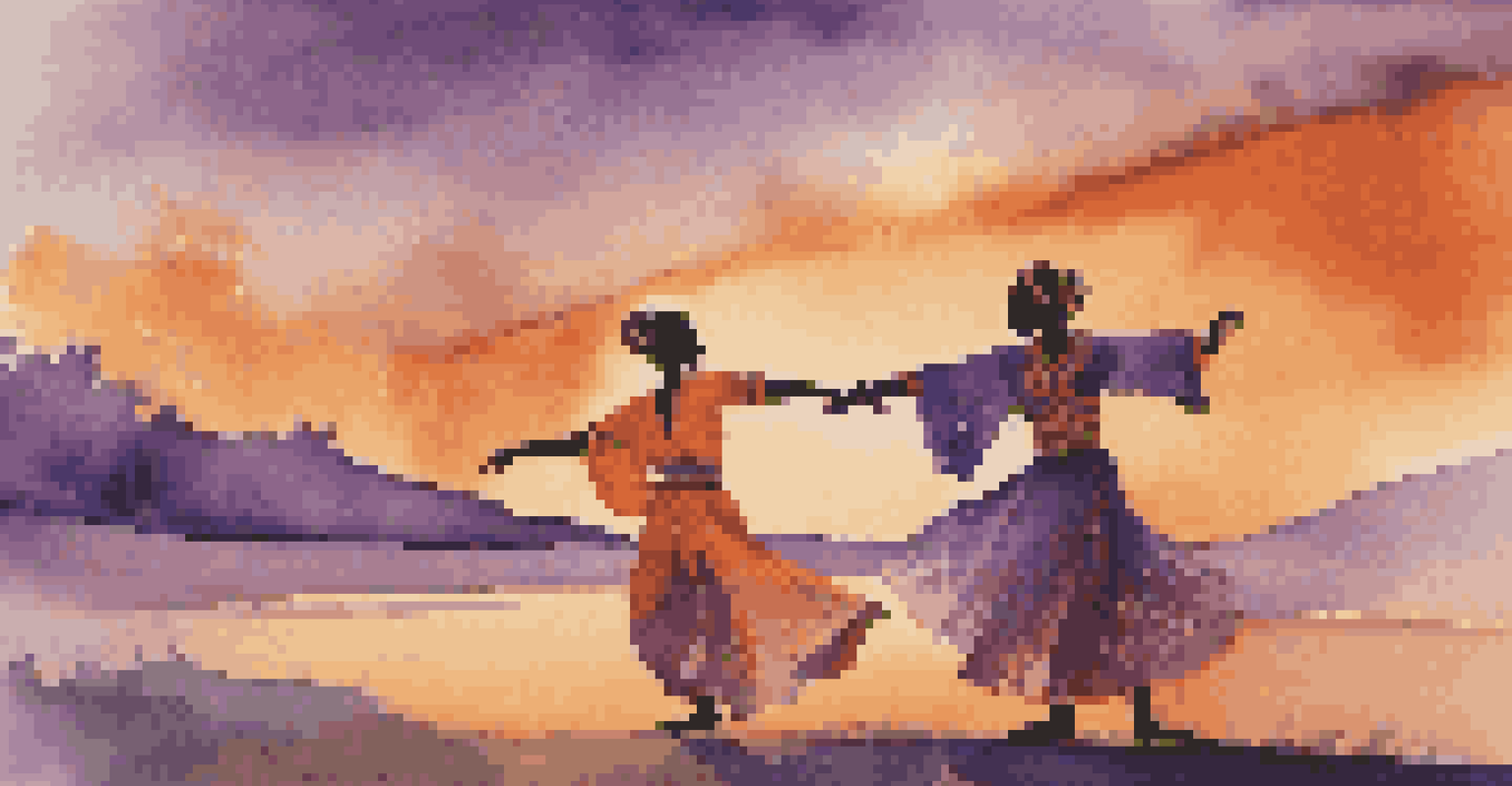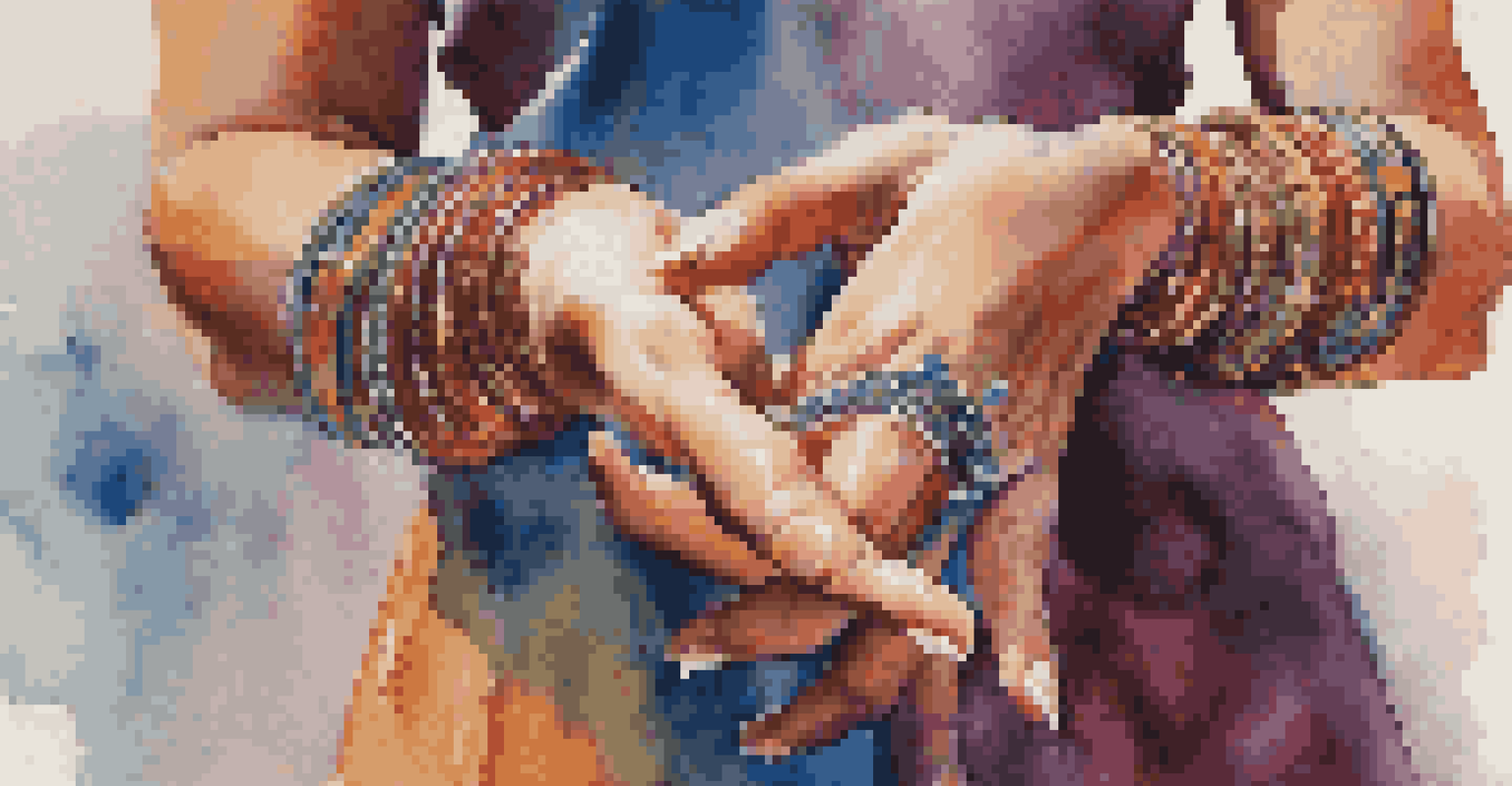The Significance of Gesture in Dance Choreography

What is Gesture in Dance and Why It Matters
Gesture in dance refers to the movements made by the dancer's body, particularly the hands and arms, that convey meaning and emotion. These movements are not just decorative; they are essential in expressing the narrative and themes of a performance. For instance, a simple wave can signify farewell, while an outstretched arm might represent longing or reach.
Dance is the hidden language of the soul.
Understanding the significance of gesture helps choreographers and dancers create a deeper connection with their audience. It adds layers to the performance, making it more relatable and engaging. Just as a painter uses colors to evoke feelings, a dancer employs gestures to communicate emotions and stories.
Moreover, gestures can bridge cultural gaps, making dance a universal language. Whether it's a traditional folk dance or a contemporary performance, gestures resonate with viewers, allowing them to feel the dancer's message on a personal level.
The Emotional Power of Gesture in Dance
Gestures are powerful tools for evoking emotions in both the dancer and the audience. A well-executed gesture can capture a fleeting emotion, turning it into a lasting impression. For example, a dancer’s gentle hand movement can evoke tenderness, while sharp, quick gestures can communicate anger or urgency.

This emotional connection is vital in storytelling through dance. When a dancer uses gestures that align with the music and choreography, it creates a cohesive narrative that draws the audience in. Think of a drama where the actor’s facial expressions and gestures amplify the story; dance operates on the same principle.
Gesture Enhances Dance Storytelling
Gestures in dance convey meaning and emotion, enriching the narrative and allowing deeper audience connection.
By mastering the emotional aspect of gestures, dancers can elevate their performances, making them not just visual spectacles but also profound experiences. This emotional depth is what often lingers in the minds of audiences long after the performance ends.
Gesture as a Storytelling Element in Dance
In dance, gestures play a pivotal role in storytelling, often filling in the gaps where words cannot. They can signify relationships, emotions, and transitions, making the narrative more dynamic and engaging. For instance, in a duet, the way dancers interact through gestures can reveal their connection or conflict, adding richness to the story.
The body says what words cannot.
Choreographers often use specific gestures to symbolize larger themes or concepts. For example, a circle might represent unity, while a breaking gesture can signify a rupture or division. By incorporating these symbols into the choreography, the dance becomes a more powerful vehicle for storytelling.
Moreover, gestures can also reflect cultural narratives and histories. Traditional dances often incorporate gestures that hold significance within that culture, allowing dancers to honor their heritage while also educating the audience. This interplay of gesture and storytelling brings depth to the performance.
The Role of Gesture in Choreographic Composition
Choreographers meticulously craft gestures as part of their overall composition, ensuring each movement serves a purpose in the dance. The arrangement of gestures can create a visual rhythm that complements the music, enhancing the audience's experience. For example, synchronized gestures can create a stunning visual effect that captivates viewers.
Additionally, the placement of gestures within the choreography can shift the focus and create tension or release. A sudden, dramatic gesture can heighten anticipation, while a soft, flowing movement can provide a sense of calm. This strategic use of gestures allows choreographers to manipulate the audience's emotions effectively.
Cultural Influence on Dance Gestures
Different cultures have unique gesture languages that significantly shape choreography and performance styles.
In essence, gestures are not mere embellishments; they are integral components of the choreography that help to convey the intended message. A thoughtful approach to gesture can elevate a dance piece from good to unforgettable.
Cultural Influences on Gesture in Dance
Gestures in dance are often deeply rooted in cultural contexts, reflecting the values and traditions of a community. Different cultures have unique gesture languages that can significantly influence choreography. For instance, traditional Indian dance forms incorporate intricate hand gestures (mudras) that convey specific meanings and tell stories.
Choreographers drawing from diverse cultural backgrounds can enrich their work by integrating these gestures, creating a fusion of styles. This not only enhances the performance but also fosters appreciation for different cultural expressions. Imagine a contemporary dance that weaves in elements from African, Asian, and Western traditions to create a beautiful tapestry of movement.
Furthermore, as globalization continues to shape the arts, the exchange of gestures across cultures can lead to innovative choreographic practices. By embracing and respecting cultural gestures, dancers and choreographers can create performances that resonate on a global scale.
Gesture in Improvisational Dance Forms
In improvisational dance, gestures often emerge spontaneously, allowing dancers to express themselves authentically in the moment. This freedom can lead to unexpected and powerful movements that resonate deeply with both the dancer and the audience. For instance, a dancer might react to the music with a gesture that reflects their immediate emotional state.
The improvisational nature of gesture in dance encourages exploration and creativity. Dancers can experiment with different movements, discovering new ways to communicate their feelings and ideas. This process not only enriches their personal practice but also adds freshness to performances.
Improvisation Fuels Authentic Expression
In improvisational dance, spontaneous gestures allow dancers to express their emotions genuinely, creating a unique connection with the audience.
Moreover, improvisation can create a unique connection between dancers and the audience, as viewers witness genuine moments of expression. This unpredictability can make performances more engaging, as audiences feel an intimate connection to the dancers' experiences.
The Future of Gesture in Dance Choreography
As dance continues to evolve, so too will the role of gesture in choreography. With advancements in technology and changes in societal norms, new forms of expression are emerging. For instance, incorporating digital elements into performances can create innovative ways for gestures to interact with visual media.
Furthermore, the increasing emphasis on inclusivity in the arts is prompting choreographers to rethink how gestures can be used to represent diverse experiences. This evolution opens doors for more varied and rich storytelling through movement, making dance accessible to a broader audience.

Ultimately, the future of gesture in dance choreography is about exploration and adaptation. As dancers and choreographers push boundaries, gestures will continue to play a vital role in shaping the language of dance, ensuring that it remains a powerful medium for expression and connection.